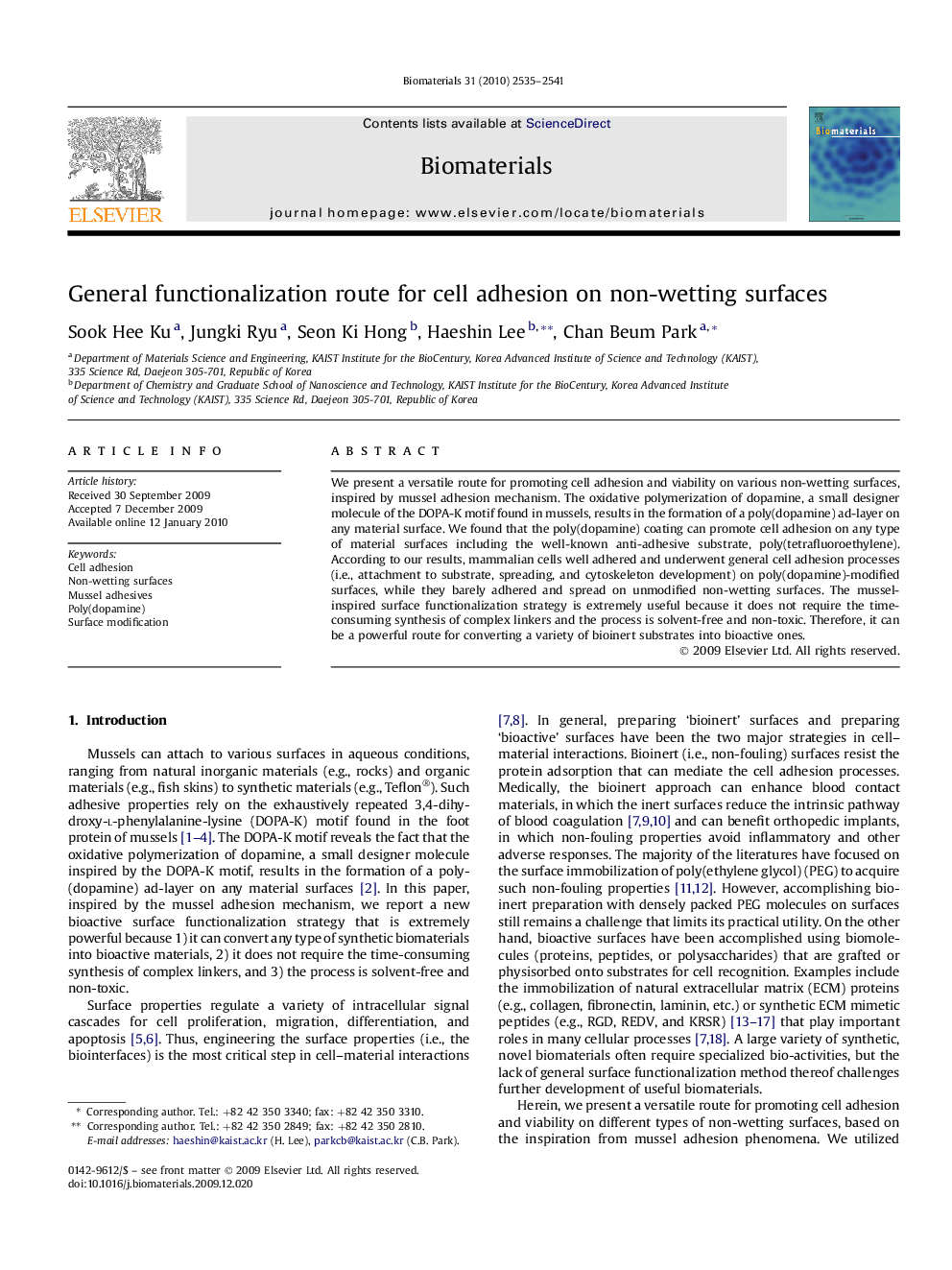| Article ID | Journal | Published Year | Pages | File Type |
|---|---|---|---|---|
| 8463 | Biomaterials | 2010 | 7 Pages |
We present a versatile route for promoting cell adhesion and viability on various non-wetting surfaces, inspired by mussel adhesion mechanism. The oxidative polymerization of dopamine, a small designer molecule of the DOPA-K motif found in mussels, results in the formation of a poly(dopamine) ad-layer on any material surface. We found that the poly(dopamine) coating can promote cell adhesion on any type of material surfaces including the well-known anti-adhesive substrate, poly(tetrafluoroethylene). According to our results, mammalian cells well adhered and underwent general cell adhesion processes (i.e., attachment to substrate, spreading, and cytoskeleton development) on poly(dopamine)-modified surfaces, while they barely adhered and spread on unmodified non-wetting surfaces. The mussel-inspired surface functionalization strategy is extremely useful because it does not require the time-consuming synthesis of complex linkers and the process is solvent-free and non-toxic. Therefore, it can be a powerful route for converting a variety of bioinert substrates into bioactive ones.
